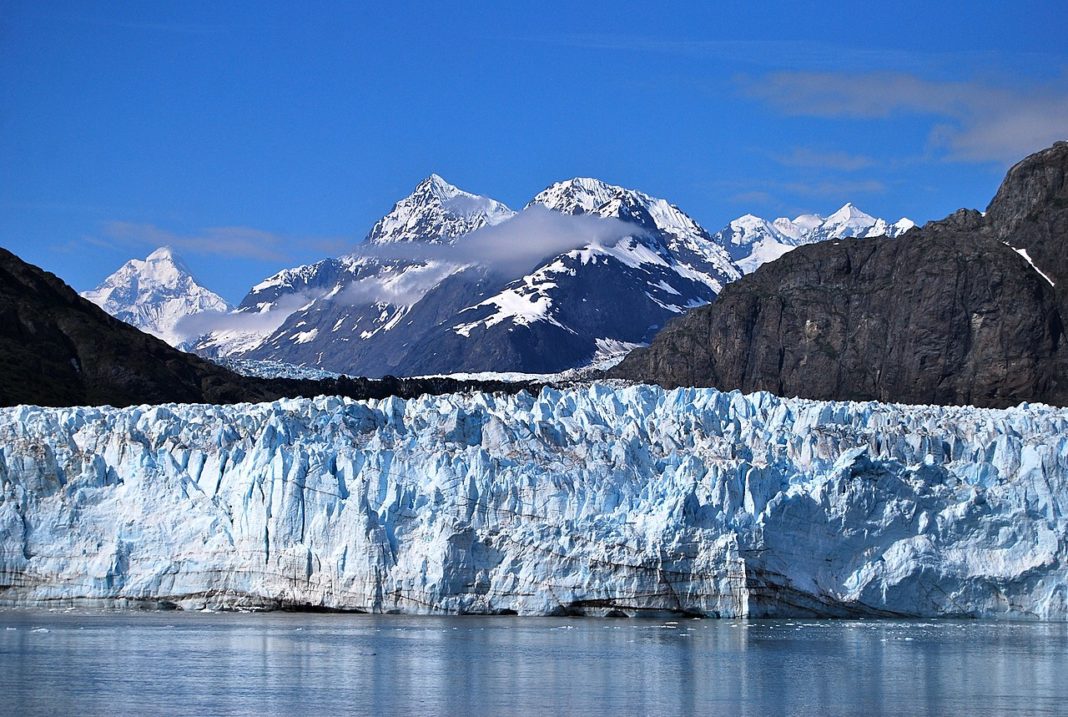Margerie Glacier is a tidewater glacier located in Glacier Bay National Park and Preserve in Alaska, United States. It is about 34 km long and 110 m thick. The glacier originates in the Fairweather Range at elevations exceeding 2,700 m. It flows relatively quickly, estimated to flow about 610 m per year or about 1.8 m per day.

The glacier’s blue ice is incredibly clear and vibrant. Its surface is covered in cracks and crevasses, which create a stunning and jagged pattern. The glacier is also known for its calving, which is the process of large chunks of ice breaking off the glacier and falling into the water with a thunderous crash. Besides that, the water reflects Margerie’s shadow, creating a mirror-like image that is mesmerizing to behold.

Margerie Glacier is one of the most active and frequently-visited glaciers in Glacier Bay, which was declared a National Monument in 1925, a National Park and Preserve in 1980, a UNESCO World Biosphere Reserve in 1986, and a World Heritage Site in 1992. While most of the tidewater glaciers in the park have been receding over the last several decades, Margerie Glacier has become stable, neither growing nor receding, while Johns Hopkins Glacier is advancing.

Glacier Bay and its many glaciers are approachable only by air and water as there are no roads in the park. The steep drops off of Margerie Glacier terminus allow cruise ships and smaller park tour boats to anchor nearby providing close-up views of ice calving.

According to the Internet








![[HONORARY PROFESSOR OF RECORD FOR PRACTICE AND EMPIRICAL RESULTS – 2024] RECORD HOLDER CHU BAO QUE (BAC GIANG PROVINCE, VIETNAM)](https://worldmark.world/wp-content/uploads/2024/05/z5401509010514_2898fa0bcee3af78744ceb5f3984a5c8-218x150.jpg)






